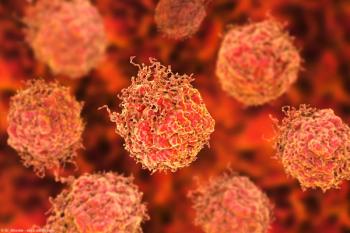
Nonobstructive azoospermia is tied to genetic defect
Montreal--Idiopathic, primary nonobstructive azoospermia (NOA) is linked to a genetic defect known as a dysfunctional DNA mismatch repair pathway that also places these men at increased risk for cancer and other medical illnesses. Given that the problem is genetic in origin, the consequences of this defect may be of significance for both patients and their offspring, researchers say. Both concerns require close monitoring by physicians.
Genetic defects associated with a dysfunctional DNA mismatch repair pathway result in a failure to properly recognize and repair base pair mismatches. The ultimate consequence of this defect is an increased risk of both tumorigenesis and testicular pathology. It stands to reason, therefore, that men with idiopathic, primary NOA associated with a dysfunctional DNA mismatch repair pathway are also at increased risk of developing cancer.
"There is a relationship between nonobstructive azoospermia and cancer development because the DNA mismatch repair pathway is very important for tumorigenesis and normal spermatogenesis. They are all connected," said study co-author Lei Chu, a fourth-year medical student at Baylor College of Medicine in Houston working in the laboratory of Dolores Lamb, PhD.
Instability similar to cancer
Fibroblasts from 10 of the 11 Sertoli cell lines, three of the four hypospermatogenesis cell lines, and all three of the maturation arrest cell lines exhibited resistance to MNNG, Chu explained at the American Society for Reproductive Medicine annual meeting here. As expected, both of the positive controls also exhibited resistance to MNNG, while all of the negative controls were inhibited by exposure to MNNG.
"These results demonstrate a problem somewhere along this complex DNA repair pathway that normally protects the genome," Dr. Lamb told Urology Times.
In a previous publication (Mol Hum Reprod 2003; 9:61-8), the investigators analyzed the peripheral blood leukocytes of both experimental patients and controls for microsatellite instability, another functional measure of DNA replication or repair defect. Instability-similar to that seen in some cancers-was observed in the leukocytes of the experimental patients, but not in those of the controls. The investigators are in the process of assessing microsatellite instability in the current group of patients.
"These patients are likely to be at risk for cancer development later in life," Chu said. "In fact, two of the 18 patients had colon or testicular cancer, respectively. Intrinsic defects in the process that maintains genomic stability suggest that NOA patients will need more health surveillance and monitoring by urologists, not just for male infertility, but also for general health, such as cancer."
In addition, because the disorder results in a greatly increased risk of mutation in all of an individual's cells (including the few sperm that can be found), it is possible that even the offspring of these men conceived by intracytoplasmic sperm injection might be at increased risk of gene mutations. In fact, Dr. Lamb's lab is conducting genetic testing in the children conceived by these men via in vitro fertilization and ICSI to determine if they can find any abnormalities.
Both men with NOA and their offspring should be closely monitored for both cancer development and other genetic diseases, Chu concluded.
Newsletter
Stay current with the latest urology news and practice-changing insights — sign up now for the essential updates every urologist needs.


















